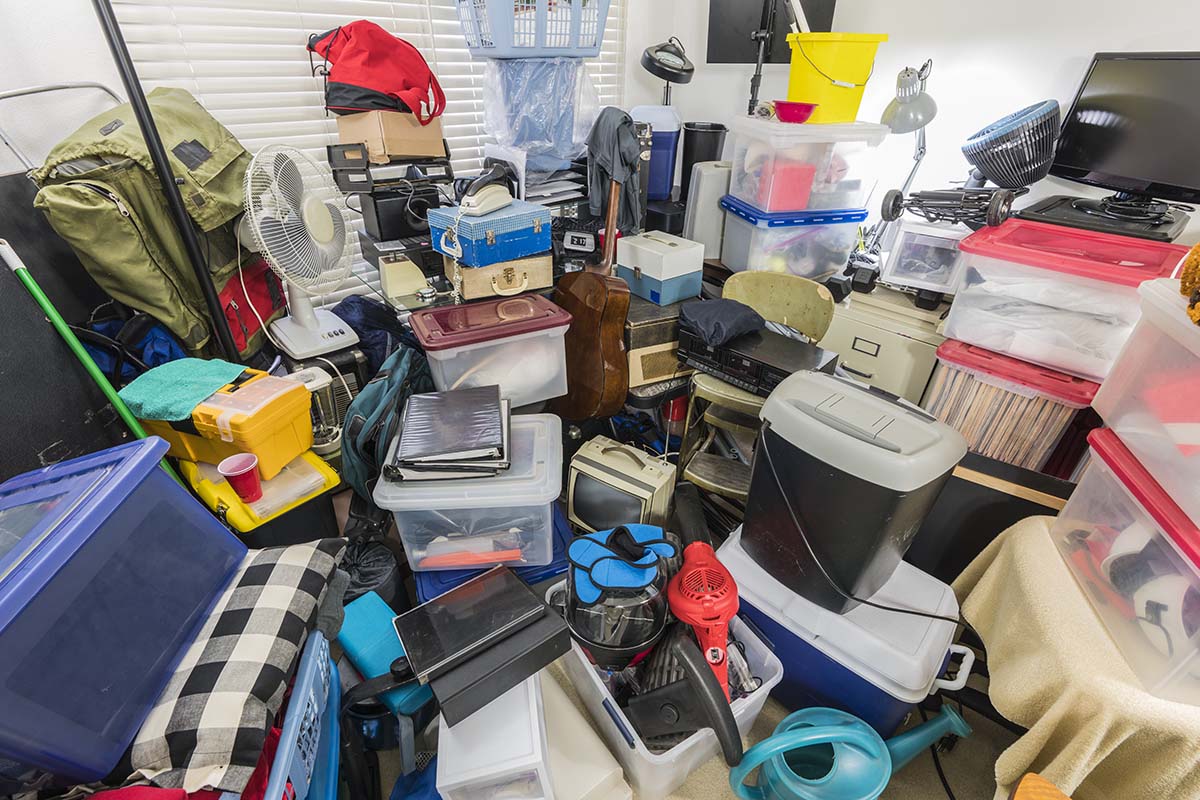This article was published on: 09/14/21 9:07 PM

Looking through pictures in an old photo album or snapshots of moments on our phones is a way that we can fondly look back on memories that we wish to revisit. It may be hard to delete or throw away any of those photos when faced with the reality of not having enough space to hold onto them. What if I forget the memory? I would feel like I’m discarding the memory – how can I part with it? Can I be okay with discarding something with which I feel so connected?
This is not dissimilar to the way that an individual with Hoarding Disorder faces challenges with their own clutter. Individuals with Hoarding Disorder make connections, like we all do, to memories, items, or people. They can have a profound sense of responsibility to do their part, such as helping save the planet, making someone smile, or in aiding in efforts to prevent waste (Frost, Steketee, & Tolin, 2011).
Clutter does not happen overnight, however, and there are several central factors which contribute to hoarding. Acquiring items, often excessively; having challenges with discarding; living in a cluttered space; and having significant distress and impairment contribute to a perpetuation of the individual’s clutter (Tompskins, Hartl, Frost & Steketee, 2009). Because there is a connection to things collected, the individual may find it difficult to see their items as “clutter” and find it challenging to part with them, no matter the circumstances. The situation may become serious with family members, neighbors, housing authorities, local officials, exterminators, and medical or mental health professionals stepping in to address various hazards which may threaten the safety of the individual. Loved ones often seek treatment on behalf of the individual and all involved may find it difficult to understand how to usher forth meaningful change.
Hoarding may co-occur with another disorder or may be present on its own (Weir, 2020). According to a study performed by Frost, Steketee, and Tolin in 2011, 50% of individuals who were diagnosed with Hoarding Disorder reported having lived through a traumatic experience and several met criteria for PTSD. Thirty percent of those with Hoarding Disorder were diagnosed with Attention-Deficit/Hyperactive Disorder (ADHD) and 25% were diagnosed with Social Anxiety Disorder. Furthermore, 18% met criteria for Obsessive-Compulsive Disorder (OCD).
So what do we do to help those who find themselves with more items than they know what to do with?
Cognitive Behavioral Therapy (CBT) is the most well-studied intervention for Hoarding Disorder and results in significant decreases in symptoms across participating individuals (Tolin, Frost, Steketee & Muroff, 2015). Treatment aims to define the connection and beliefs about the possessions that drive the hoarding behavior. Treatment involves challenging mistaken beliefs about the possessions and the distress associated with letting go of them. This is accomplished with cognitive appraisal and reappraisal and exposure with response prevention. Treatment often involves home visits where the therapist and individual practice sorting, discarding, making decisions, and challenging beliefs together. In addition, the therapist will often accompany the individual on outings to practice resisting urges to acquire new possessions. Treatment is about helping the person live a more meaningful and fulfilling life in accordance with their personal aspirations and life goals.
Those with clutter problems acquire or hold onto things for the same reasons as the rest of us. Most people who struggle with Hoarding Disorder are kind, thoughtful, sensitive, and caring people. Let’s embrace these positive qualities. So as we look through those captured memories, let us find understanding in our sentimentality, draw compassion from challenges parting with items that bring forth meaningful connection, and bring help to those who need it. If you find yourself struggling with Hoarding Disorder or are a loved one of someone who is, finding adequate treatment is of the utmost importance. Good help is out there! More information can be found on IOCDF’s website, http://hoarding.iocdf.org
References
Frost, R. O., Steketee, G., & Tolin, D. F. (2011). Comorbidity in hoarding disorder. Depression and anxiety, 28(10), 876–884. https://doi.org/10.1002/da.20861
Tolin, D.F, Frost, R.O., Steketee, G. (2014). Buried in Treasure: Help for compulsive acquiring, saving, and hoarding. Oxford University Press.
Tolin, D.F, Frost, R.O., Steketee, G. , Muroff, J. (2015). Cognitive behavioral therapy for hoarding disorder: A meta-analysis. Depression and anxiety, 32(3), 158-166. https://doi.org/10.1002/da.22327
Tompskins, M.A., Hartl, T.L., Frost, R.O., Steketee, G. (2009). Digging Out: Helping your loved one manage clutter, hoarding & Compulsive acquiring. New Harbinger Publications.
Weir, K. (2020). Treating people with hoarding disorder. American Psychological Association, 51(3). https://www.apa.org/monitor/2020/04/ce-corner-hoarding
written by Chelsea Goody, LGPC, Clinical Associate and edited by Andrea G. Batton, LCPC, Clinical Director

 The Maryland Anxiety Center was founded by Andrea G. Batton, LCPC with a vision of creating a practice where clinicians and staff work cohesively and collaboratively with patients to provide optimal psychological care. The Maryland Anxiety Center specializes in the treatment of anxiety and related disorders from a cognitive behavioral perspective, the gold-standard and most effective treatment for such conditions.
The Maryland Anxiety Center was founded by Andrea G. Batton, LCPC with a vision of creating a practice where clinicians and staff work cohesively and collaboratively with patients to provide optimal psychological care. The Maryland Anxiety Center specializes in the treatment of anxiety and related disorders from a cognitive behavioral perspective, the gold-standard and most effective treatment for such conditions.